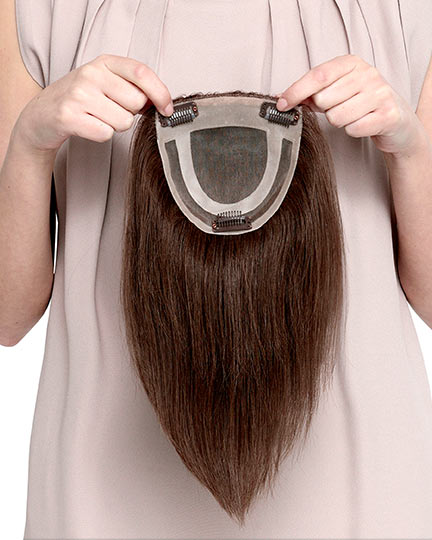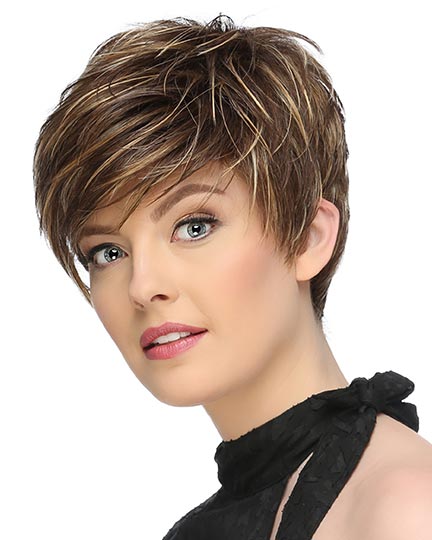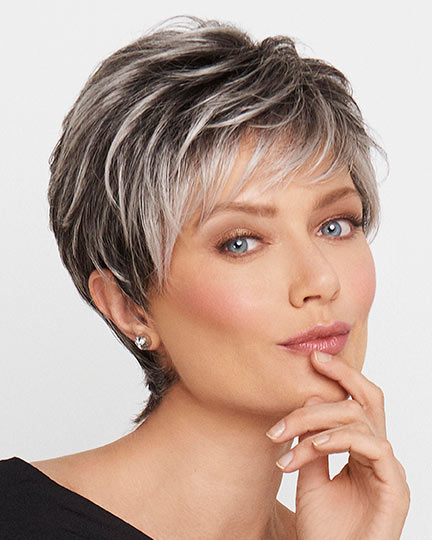Sat: 8 AM - Noon PST
+ Free Shipping
The History Of Wigs
The History Of Wigs
**The 15off promo excludes Tony of Beverly Wigs & Jon Renau wigs.
If interested in these brands please call: 888-394-4748
In ancient Egypt, both males and females wore wigs made either from human hair, sheep's wool or vegetable fibers, depending upon their social status. There were a number of benefits for Egyptians from shaving their heads. First it was more comfortable in the hot Egyptian climate not to have hair. Secondly, a baldhead helped avoid the danger of an infestation of lice, which was a problem at that time. However, it appears that Egyptians preferred having "hair" which resulted in the creation of wigs that gave the appearance of hair. The new wigs also protected the Egyptians' baldheads from the brutal sun. Wigs became part of daily wear for the Egyptian people indicating a person's status as well as their role in a society or politics. Women's wigs were adorned with braids and gold, hair-rings and ivory ornaments making them more stylish than men's wigs. Ultimately, the more elaborate and involved the wig was, the higher the social rank.
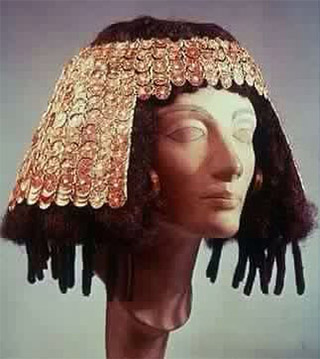
In the Old Kingdom period, women preferred wigs that were short or chin length bobs.
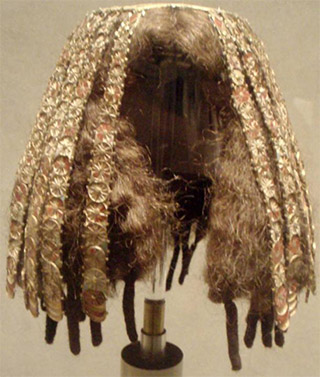
The favored wig style during the Egyptian Middle Kingdom (c. 2000–c. 1500 b.c.e.), were bulky with hair coils draping forward over each shoulder.
This wig cover is an approximate recreation (from original pieces) from the tomb of three minor wives of Thutmose III at Wady Gabbanat el-Qurud, circa 1479-1425 BC.
Made of gold, gesso, carnelian, glass and jasper.
(CC BY-SA 2.5 )
To read more about The history of wigs in Ancient Egypt CLICK HERE.
Other ancient civilizations whose citizens wore wigs were the Greeks, Romans, Assyrians, and the Phoenicians. For the Romans, in particular, wigs were often made with hair from slaves. Unfortunately, due to the relatively humid climate inmuch of Italy, there are very few examples of wigs from the of the Roman Empire that have survived. Both Roman women and men wore wigs whether they were bald or not. During the Roman Empire wealthy Roman women often wore unusually elaborate hairpieces that greatly increasd both the volume and effect of the hairstyle. Some wigs were worn to look natural, but many were intentionally "fake" with braids of contrasting hair colors. Favored hair for Roman wigs was from German tribal slaves with their blonde hair and from slaves from India with their black hair. Wigs were particularly convenient to wear as hairstyles became more and more elaborate.
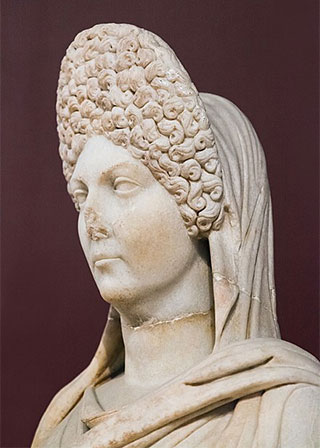
Roman statue of a woman with elaborate hairstyle (Aphrodisias, 2nd century AD
To read more about Roman Hairstyles CLICK HERE.
In contrast, the people of the ancient civilizations in the Far East, including China and Japan, rarely wore wigs except by actors performing in the traditional theaters of China and Japan (Noh or Kabuki) and by certain types of female entertainers such as the Japanese geisha or the Korean Kisaeng.
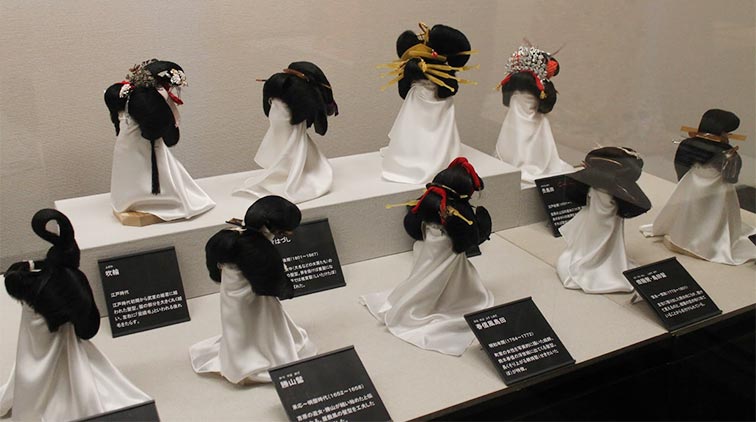
Traditional hair and geisha wigs
To read more about Traditional hair and geisha wigs at the Kyoto Hair Museum CLICK HERE. The Japan Hair Museum (Japanese Coiffure Museum), located on Yamato Oji-dori, tells the history of Japanese coiffure. On display are 115 examples of Japanese hairstyles ranging from ancient to modern times, in the form of hairpieces 1/4 of the actual size.
With the emergence of Christian influences during the Medieval Era became plainer. By the Middle Ages (1200-1400 A.D.) wigs lost their relevance because of difficult times. Women were usually required to have their head covered, fashion was off everyone's radar, and beauty was austere. Then, in the beginning of Renaissance (1400-1600) the female hairstyle regained importance and women began showing their hair again. Instead of covering their heads, they adorned their coiffures with lustrous veils and sparkling jewels. Once again women's wigs emerged as fashion and beauty became important considerations in society.
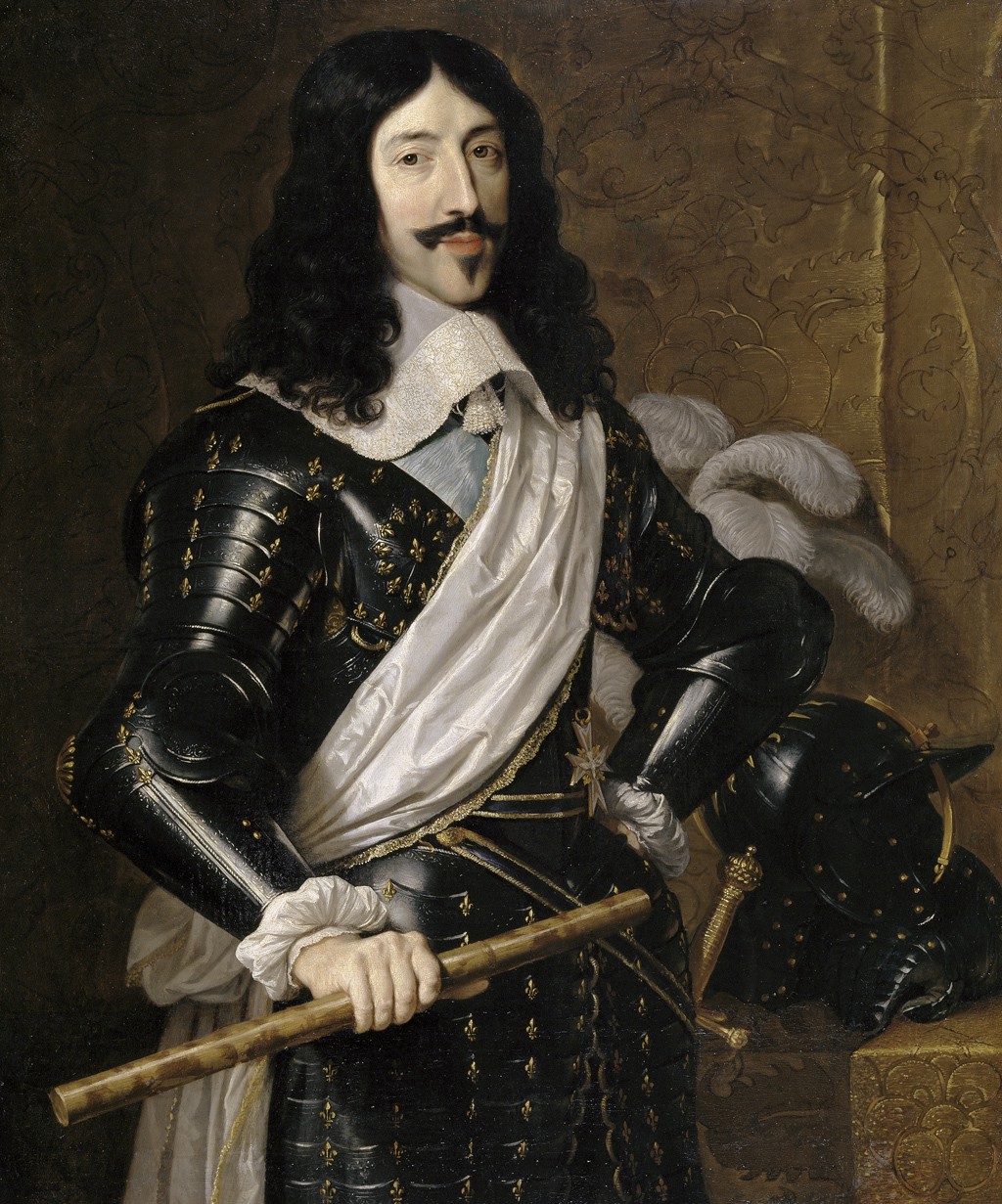
The history of wigs in France stretches back to the reign of Louis Xlll who went prematurely bald. To disguise his baldness he began wearing elaborate wigs. Historical records indicate that the first independent wigmakers' guild was created in 1673. The wig now enjoyed the most noble of pedigrees from the seventeenth-century French courts of Louis XIII and Louis XIV and it became a fashion icon that was integral to the aristocratic world of power and display. The mistress of King Louis XIV wore her hair in a signature hairstyle called the la Fontange. It was a fashion look that was copied and with the help of hairpieces and false locks worn by numerous high upper class "wantabees". By the end of the Sun King's reign, wigs had spread well beyond the nobility of France. Kings at royal courts across Europe wore wigs, now a most essential feature of the European noble costume.
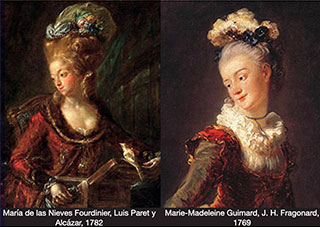
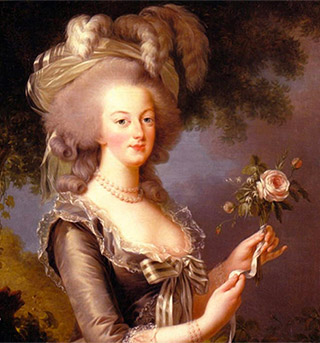
The 18th century saw elaborate wigs with mile-high coiffures and highly decorated curls. White powdered wigs with long ringlets became the order of the day. In fact, some imaginative ladies had wigs with small birdcages complete with bird, on top of their heads. For wigs, big hair was definitely the in-thing. The hair styles, many of which were achieved with wigs were so elaborately artificial and far removed from natural appearance. This epoch was an extravagant explosion of amazing hairstyles, a reaction completely opposed to the modesty of former centuries.
To read more about The Hair of the 18th Century CLICK HERE.
Another memorable royal who was known for her elaborate wigs was Queen Elizabeth I of England. Wigs were so widespread that virtually all the elite wore wigs or elaborate hairstyles during this time.
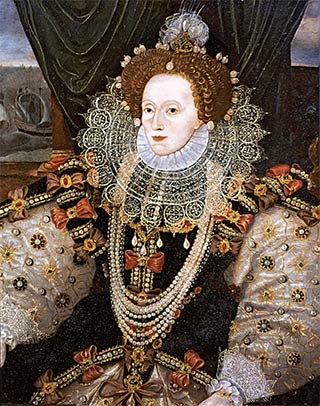
To read more about Elizabeth I Queen of England (including wigs and hair styles) CLICK HERE.
It is not surprising that by the end of the 18th century the number of French master wigmakers had skyrocketed from the fashion center of Paris to other European capitols and finally to provincial cities as well. In addition to the guild master wigmakers were thousands of journeymen wig makers and artisans traveling the European countryside producing wigs clandestinely. Eventually, wigs were no longer an exclusive luxury item, an exclusive marker of high birth or a status symbol worn by the privileged few. A shorter, less elaborate wig, called the bob wig, was very popular in Colonial America at the beginning of the 18th century.
The word "wigs", itself, is taken from "periwigs" which was the name of the particular long, curly wigs that became popular after Charles II was returned to the throne in 1660. Some historian attribute popular fashion status of the periwig to Louis XIII.
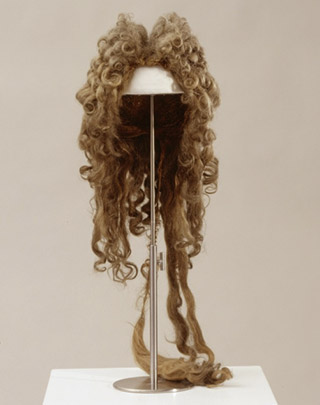
1600's Periwig made from horse hair.
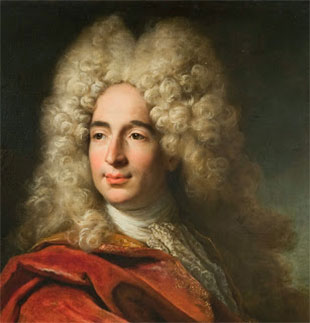
The Periwig evolved to this extravagant look.
The style of the periwig changed over the decades. Periwigs for the upper classes were made of human hair. The periwig simulated real hair and was primarily used for adornment or to cover the loss of real hair. Periwigs became extremely sought after it achieved status symbol. Having become a tradition of the English Court, the periwig is still seen today in modern British courts. The peruke, the traveling wig, and the short bob were all modifications of the great periwig. This tendency to further reduce the size of the wig is apparent as the eighteenth century advances.
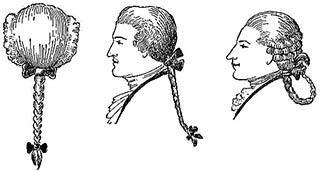
To read more about The Periwig CLICK HERE.
By the end of the 18th century, young men began wearing their hair in a more natural state. Although the powered look and the use of wigs continued, it was not longer a fashion look worn everyday but reserved for older, more conservative men and ladies who were being presented at court. With the civil unrest in France against the excesses of the nobility and the association between fashion, wigs and the aristocracy, the importance of wigs in France also began to slowly fade away after the time of the French Revolution.
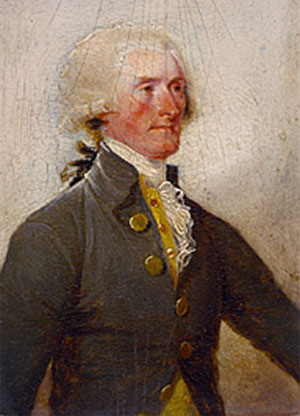
Thomas Jefferson
Meanwhile in the American colonies the gentlemen of fashion followed closely the latest styles in wigs in London and Paris. A very popular type was the queue wig / tie-wig, appearing quite often in old colonial portraits. Gradually, about 1770, many men ceased to shave their heads, and wigs, with the exception of those retained by professional men such as judges, went out of fashion. Men wore again their own hair, though it was styled in much the same manner as the wigs with puffs and rolls, with queues, and pigtails.
To read more about GROWTH AND CHANGE IN THE COLONIES (including wigs and hair styles) CLICK HERE.
The 1870s were all about big hair, big curls, big braids, and big chignons usually made from other hair. There was no way a woman could achieve a 1870's fashionable hairstyle without adding dditional hairpices to their own natural hair. Indeed, nearly every style involved different hair extensions ranging from tiny curled frizzettes (fuzzy, short bangs) to huge braids or long switches. The start of the 20th century saw the use of more hairpieces being used to enhance hairstyles.
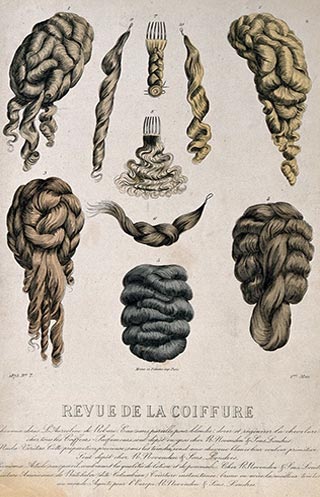
By the end of the nineteenth and the start of the twentieth century postiches, or pre-made small wiglets, curls, and false buns that were incorporated into the hair style were popular in both England and France.
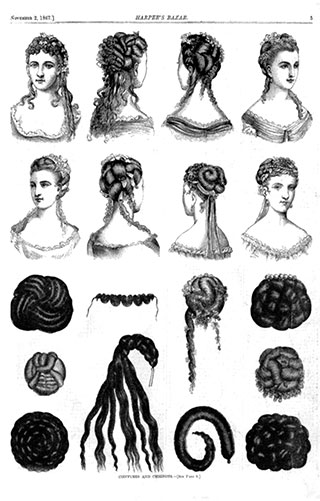
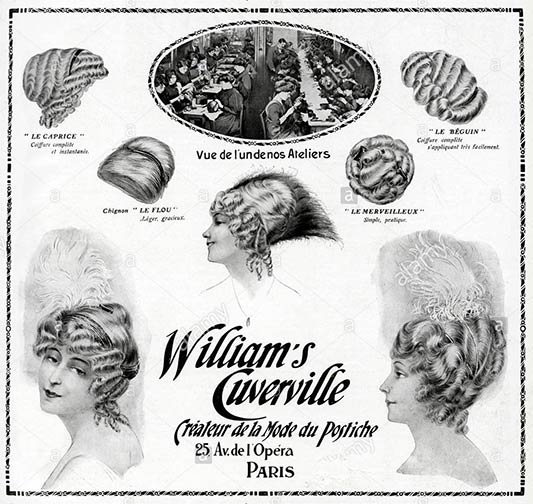
The use of postiches did not diminish even as women's hair grew shorter in the decade between 1910 and 1920, although they did go out of fashion during the 1920s when the "Bob" was the new look that could be acquired without additional hair pieces. When women started to bob their hair, they had to go to an obliging men's barber. There were no women's hair salons. Barbers quickly learned to cut women’s hair, following all the latest styles movies starlets were sporting. By the end of the 1920's, there were now many women’s only salons. Although the different styles of bob cuts had specific names such as the Egyptian bob, Charleston cut, Orchid bob, Coconut bob, or the Shingle, there were only two main styles. The bob was either short and curly or short and straight. Most bobs hovered around the earlobe length with a center or deep off-center part.?You will notice that many recent wig bob styles seem to be inspired by 1920's bob cuts.
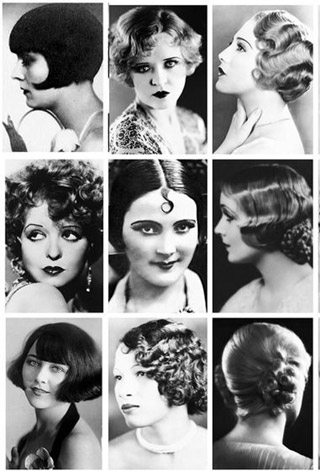
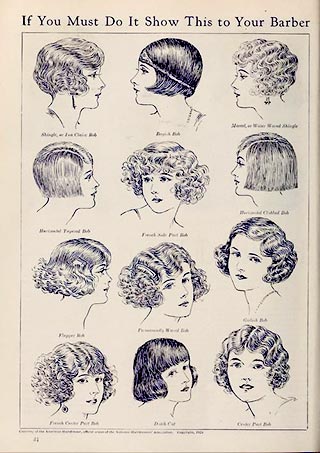
To read more about 1920s Hairstyles History CLICK HERE.
Everything associated with fashion: hairstyles, wigs, clothing, shoes, handbags evolve. Modern technology has made stylish, chic synthetic wigs within the reach of everyone. Wig manufacturers are constantly developing better wig cap construction, fit, and styling. Human hair wigs allow the maximum in versatility and styling possibilities, while synthetic wigs look like natural, healthy human hair, yet are easier to maintain and are less expensive. In western countries the #1 reason wigs are worn is for convenience.
Yet wigs are still worn today to create aesthetic attention. Many celebrities / pop & movie stars have either based their stage image on the use of wigs or make use of wigs for either movie rolls or for red carpet events. Just look at Cher, Dolly Parton, Lady Gaga, Gwen Stefani, Katy Perry, Salma Hayek, Cardi B, Keira Knightly, Reese Witherspoon, Yara Shahidi, or Katie Holms.
The celebrities below are all wearing wigs!
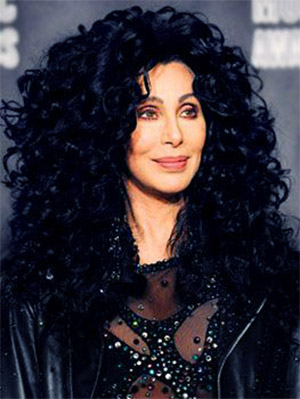 **
**
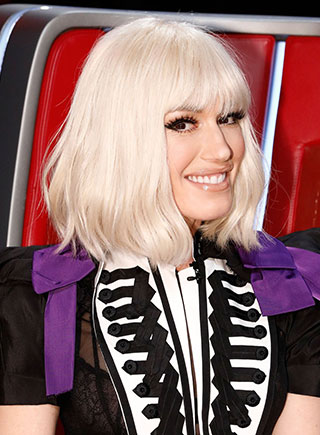
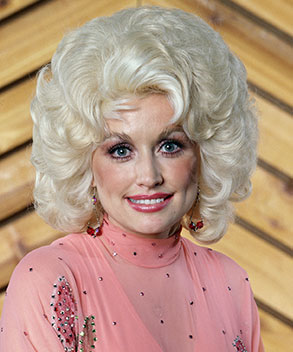 **
**
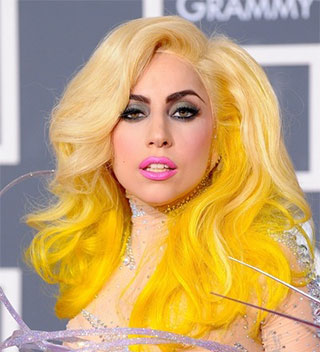
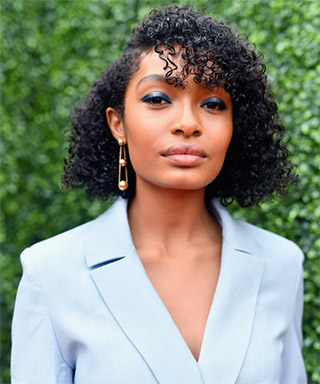 **
**
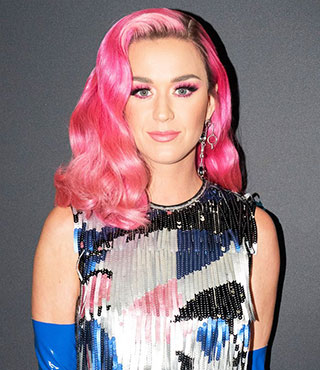
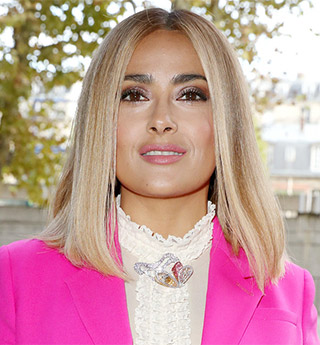 **
**
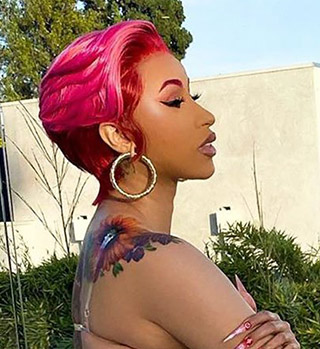
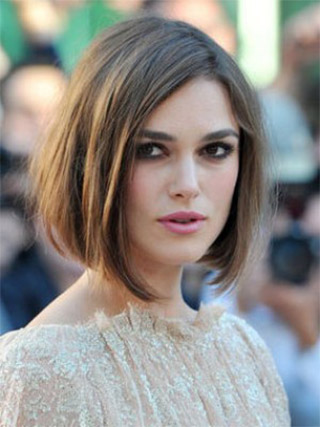 **
**

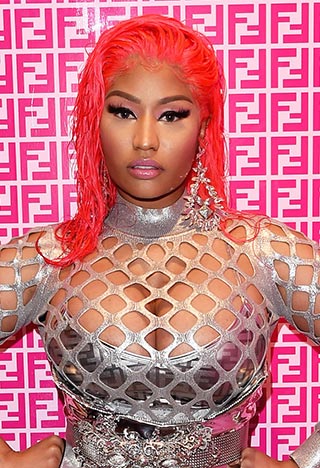 **
**
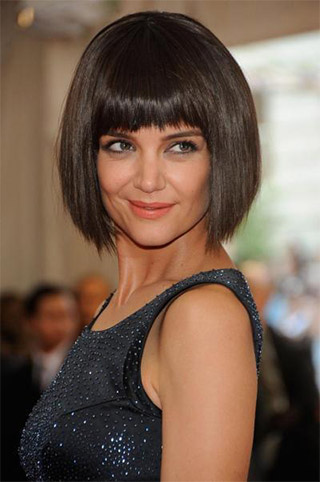
And one celebrity who was so in love with wigs she has had a wig collection with her name for over twenty five years.
While many celebrities lend their names to brands, Raquel Welch's involvement with her wig collections went far beyond mere endorsement. From the earliest days with Hairuwear, she was deeply involved in the design process, ensuring that each piece reflected her personal touch and met the highest standards of quality. She emphasized the importance of a wig feeling as good as it looked. She is quoted as saying I believe that with very little effort we can enhance our look, bring out our best features, become our best selves. So I offer you wigs that fit and flatter..
Raquel Welch styles can be found on our Raquel Welch wigs page.
?
To read more about Celebrities Who Wear Wigs CLICK HERE or CLICK HERE.
Women, today, celebrate the wig. Wig manufacturers offer natural looking wig looks, as well as wigs in flaunting, fantasy colors with elaborate styling.There are comfortable, light weight medical wigs available to people suffering hair loss due to medical conditions or treatments such as radiation and chemotherapy. There are wigs for children. And there are fun, costume wigs for Halloween, parties and events.
Just as wigs in the past have played an intriguing part in the popular culture of fashion, at ElegantWigs.com™ , we believe they will continue. At ElegantWigs.com™ we not only have many styles and colors from the best wigs brands, but also the guaranteed lowest price with FREE shipping for every wig we sell. The elegant ElegantWigs.com™ wig boutique is the most relaxing way to shop for any type of quality wig.
Give us a call at:1-888-394-4748 and make your own wig history.
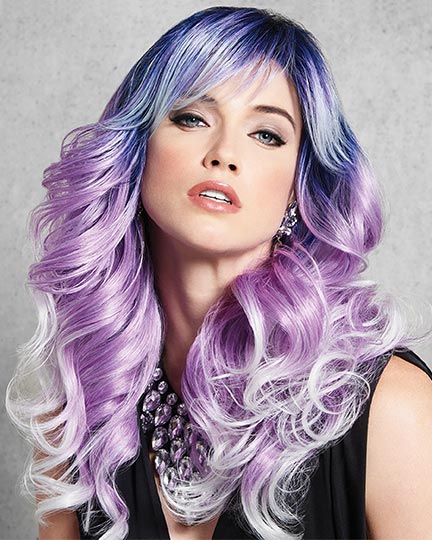
Artic Melt by Hairdo from the Fantasy Collection
Cap Construction: Monofilament Top
Color Shown: Artic Melt.
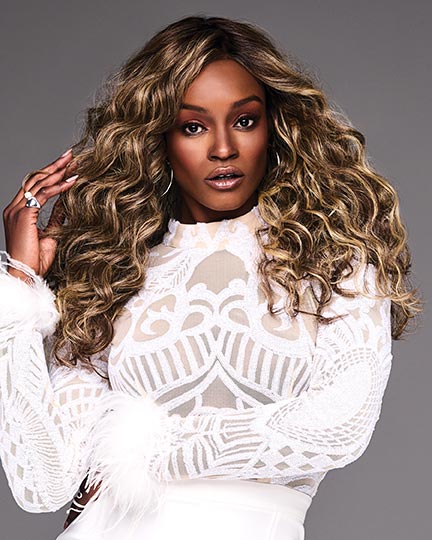
Laila by Kim Kimble
Color Shown: Plum Dandy.
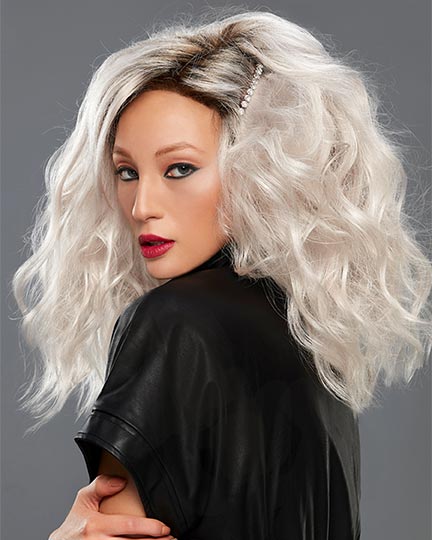
Rachel by Jon Renau from the SmartLace Collection.
Color Shown: 60S18
Sleet
Professionally styled for this photograph.


